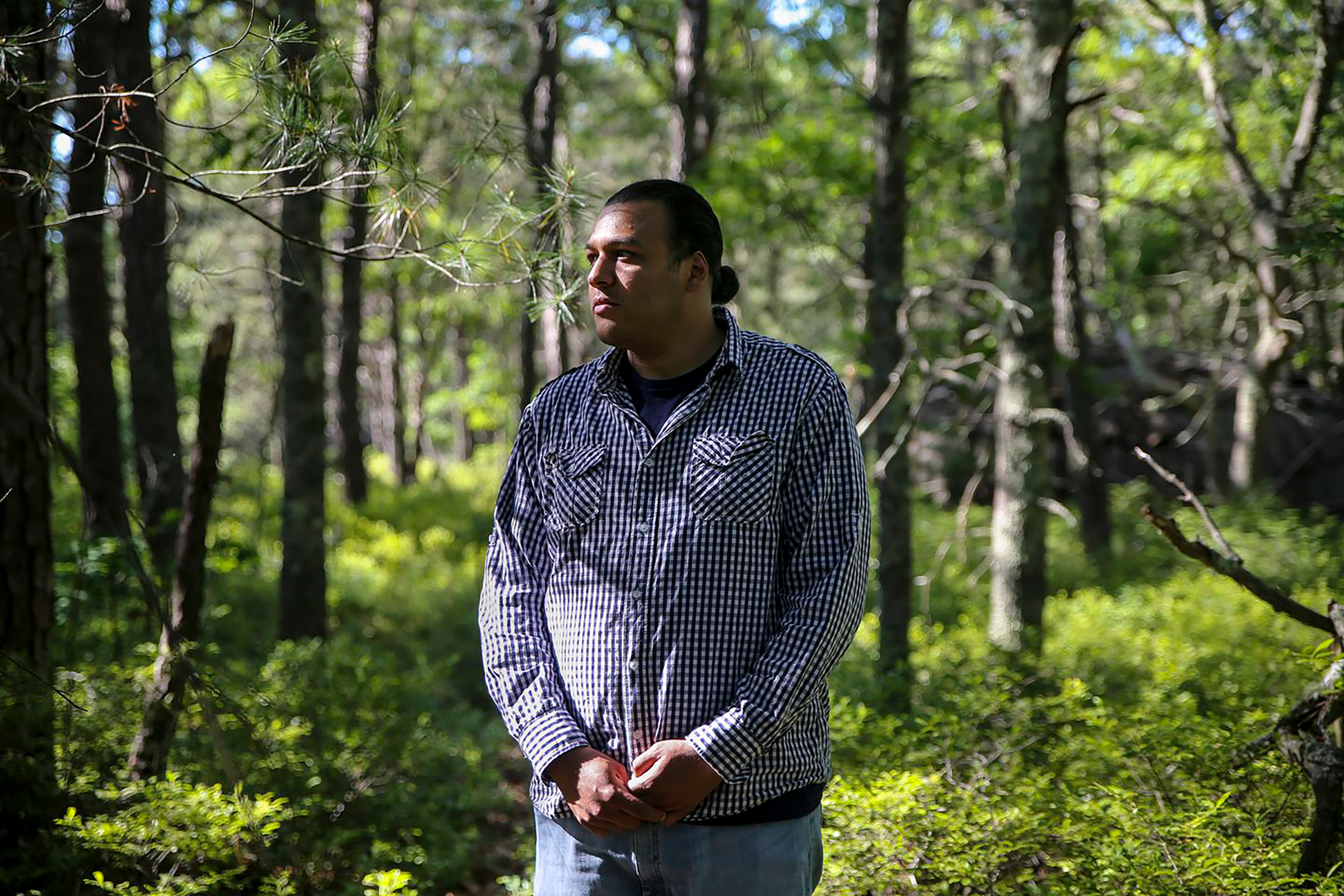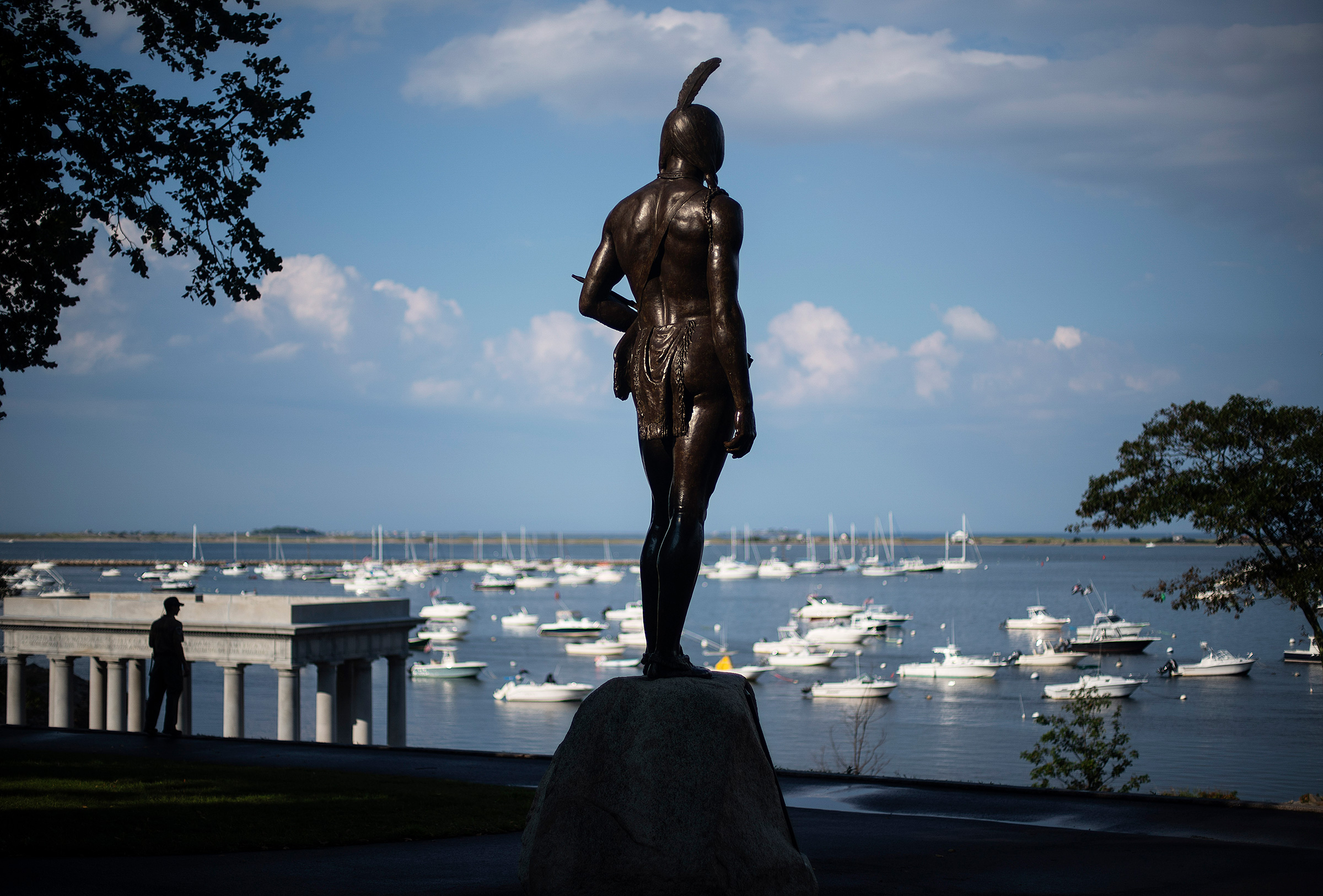
It’s been 400 years since the meal known as the first Thanksgiving took place in Patuxet, the area now known as Plymouth, Massachusetts. Two prominent figures in the Plymouth Colony described it as a three-day feast and celebration of the harvest, attended by the colonists and a group of Wampanoag Native Americans and their leader Massasoit.
But the Wampanoag were likely not in so much of a celebratory mood. They had been reeling from an epidemic of a still-mysterious disease that had almost wiped them out; outbreaks would continue to roil the tribe for the next 30 years.
“I personally think that it’s just another reminder of all the horrible things that this nation has done to not only us, but all native people,” the Chairman of the Mashpee Wampanoag tribe, 29 year-old Brian Weeden, tells TIME of that “first” Thanksgiving, adding that he and his tribe still feel largely forgotten. “For this nation to right a lot of their wrongs, they’re gonna have to own up to their racism, which they don’t want to do.”
On May 16, Weeden became the youngest person elected chairman of the Mashpee Wampanoag, which boasts about 2,600 enrolled citizens and is headquartered in Mashpee, Massachusetts. TIME talked to Weeden about Native American Thanksgivings, the biggest issues the tribe faces today—and why it is still struggling to hold onto its land 400 years later.
How does it feel to be the chairman of the Mashpee Wampanoag on Thanksgiving?
The fact that we’re still here is a blessing. And the fact that I have the honor of representing the tribe—one that a lot of people think is extinct—is a blessing in itself. It shows the resilience of our ancestors, and that we will keep on being here for generations to come.
Do you have any memories of learning about the ‘Americanized’ Thanksgiving that still stand out today?
In third grade at elementary school in Hyannis, Massachusetts, [the teachers] made us dress up and dance to “Colors of the Wind” from Pocahontas. They would have one class in potato burlap sacks and colorful feathers, and then the other class dressed as pilgrims. I went home and told my parents what was going on, and my father went into the school and reamed them out. After that, they stopped doing it.
What’s the biggest issue the Mashpee Wampanoag tribe is currently facing?
The biggest issues facing the Mashpee tribe right now are with our land, the health and general welfare of our tribal citizens, and climate change and environmental impacts. We were fine living off the land; we were smart people to the point where we knew how to navigate this world. Had people listened to us, I don’t think we’d be in the situation that we are in with global warming and everything else. But I think the biggest [singular] struggle right now for our tribe is our struggle with the federal government, which has been a battle for over 400 years.
This is in regards to the Trump administration describing 321 acres of your land as not fitting the definition of Indian, a ruling which a federal judge later called “contrary to the law.”
Yes. The next step is for the Department of Interior to listen to the judge’s order and go back to the drawing table and give us another decision. Which is kind of where we’re at. We haven’t seen progress from the [Biden] administration. It’s really frustrating.
We want a decision so we can start moving forward and taking care of our people. We have a homelessness issue—it’s expensive to live out here on Cape Cod. It’s a struggle to live on your own ancestral homeland. People can’t make ends meet and that’s why they have to leave our territory. And as long as our land is in limbo, the tribe can’t go out there and build a homeless shelter or anything else like that.

Everyone wants to talk about Native American Heritage Month and Thanksgiving. And here, the tribe that started it all is still waiting for our little bit of justice that is owed to us. The Native Americans who welcomed everybody lost all of their land. Today, we only own half of 1% of our ancestral territory. I think that just speaks volumes. Four hundred years later, I tell everyone we don’t have much to be thankful for.
President Biden said “I stand with Mashpee” while campaigning for the presidency in 2020. Do you feel that to be true?
I think that a lot of politicians say whatever they want to say to get elected. When they get there, it’s a whole different story. I was [part of the] White House Tribal Nations summit, and there really weren’t a lot of opportunities for leadership to address the administration. To add insult to injury, he’s going to be in Wampanoag territory on [Thanksgiving]—the supposed holiday that we don’t celebrate.
(Asked for comment by TIME, the White House declined to offer an on the record response.)
Read more: How America Keeps Adapting the Story of the Pilgrims at Plymouth to Match the Story We Need to Tell
What do you do on Thanksgiving?
Thanksgiving Day is a day of mourning [for myself and tribal members]. My grandfather Everett “Tall Oak” Weeden is one of the ones that helped originally start that tradition. A lot of tribal members will go out to the Massasoit statue overlooking Plymouth Rock. We’ll have a ceremony there, speak, march down to the church, have some more speaking, and then everyone will go home and have meals with their families.
A lot of our tribal members still eat venison and cranberries—which are actually indigenous to this area. The word squash comes from the Wampanoag word, askutasquash. So I think a lot of people don’t realize [when they sit down for their Thanksgiving meal that] they’re partaking in foods that are from this area.
Native Americans celebrate multiple Thanksgivings throughout the year. Do you have a favorite festival of the year?
I would say that the green corn celebration and time of harvest is one of my favorite times. The Mashantucket Pequot—the tribal nation my grandfather’s family comes from—have Schemitzun in August, which is a feast of the green corn and a dance.
The way that our people worked traditionally was on a calendar cycle based on the moons, and each moon represents a certain thing. We have Strawberry Moon, for example, where we go and harvest our strawberries, and you’d have a strawberry Thanksgiving. It was never like we were thankful this one day out of the year. And I think that that’s also important for people to understand: every day you wake up, you’re thankful that you woke up.
This interview has been edited and condensed for clarity.
More Must-Reads from TIME
- Donald Trump Is TIME's 2024 Person of the Year
- Why We Chose Trump as Person of the Year
- Is Intermittent Fasting Good or Bad for You?
- The 100 Must-Read Books of 2024
- The 20 Best Christmas TV Episodes
- Column: If Optimism Feels Ridiculous Now, Try Hope
- The Future of Climate Action Is Trade Policy
- Merle Bombardieri Is Helping People Make the Baby Decision
Write to Olivia B. Waxman at olivia.waxman@time.com